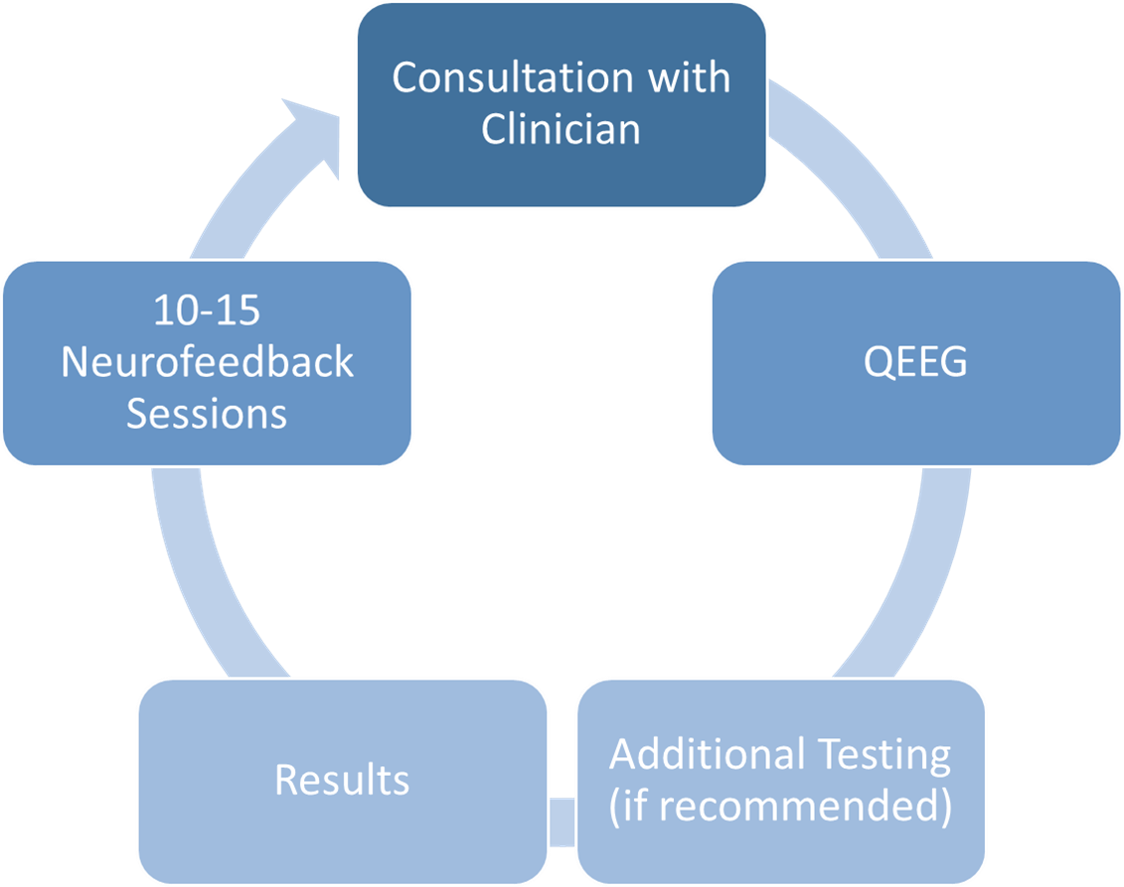
First Time Clients
Step 1: Initial Consultation
During this assessment, our clinician carefully evaluates a client’s medical, psychological, and social history as well as current needs, strengths, and symptoms through a clinical interview. Together, the clinician and client work to establish a consensus for attainable treatment goals.
Step 2: QEEG
Following the initial assessment, a quantitative electroencephalogram (QEEG) is scheduled if neurofeedback is deemed an appropriate intervention. The QEEG is a non-invasive test administered by our clinician to measure the electrical (brain wave) activity of the cerebral cortex. If additional academic or neurocognitive testing is recommended, they will be administered during this appointment. All of this information helps the clinician develop appropriate training protocols to correctly train a client’s brain to decrease the presenting symptoms.
Step 3: Results
The QEEG data is used to create a “brain map”, a visual representation of the results detailing the client’s neurological power and connectivity abnormalities. At this time, our clinician will describe the findings of the QEEG and any additional testing and will explain the individualized neurofeedback protocol that has been designed for the client’s training.
Step 4: Neurofeedback Sessions
Sessions will be scheduled twice per week until the client’s protocol – typically 10-15 sessions – has been completed. Changes are usually noticed between the sixth and tenth session with Connectivity Neurofeedback. Our experience has shown that once 10-15 sessions of training are done over a particular region of the brain, these improvements become lasting. Sessions are usually 15-20 minutes in length, although in some cases shorter training times are more useful.
Step 5: Remap
After the recommended number of sessions are complete, a follow-up QEEG is administered to evaluate the neurological improvement that has occurred. The next training protocol can then be determined to reflect the new brain pattern and address current existing symptoms. Depending on the nature of the problem, 20 to 40+ sessions (2 to 4+ protocols) are recommended in order to holistically correct the neurological abnormalities. Certain symptoms may require more or fewer sessions, and this will be discussed during the initial consultation. The goal is to complete thorough training for optimal functioning and to ensure lasting benefits.
Social Stories
QEEG and Neurofeedback will likely be an unfamiliar experience for you or your child. Most children will have no difficulty with the process at all. However, for children with sensory sensitivities, it will involve new sights, sounds, and textures, which may be a challenge. In order to make the process somewhat familiar, we’ve created two short stories that depict what your child will experience during their first QEEG or Neurofeedback session.